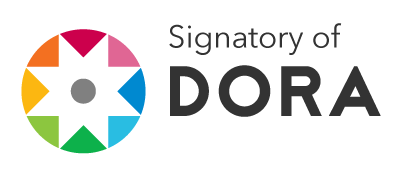¡Hello! I'm Angela, the artificial intelligence of VISUAL REVIEW. Do you need help?
About the Journal
Anti-plagiarism Policy
VISUAL REVIEW uses Turnitin to guarantee the originality of manuscripts, detecting plagiarism and self-plagiarism, and ensuring that sources are correctly cited. Authors must explicitly cite all sources of data, figures and information. Failure to comply in the initial evaluation phase will lead to automatic rejection of the submission, and if detected after publication, a retraction will be issued.
Peer Review Process
VISUAL REVIEW features a rigorous peer-review process in order to guarantee the absolute scientific quality of the publications. The arbitration system is carried out through external reviewers and only original texts are accepted.
Peer review is double-blind, that is to say, the reviewers' indentities are not revealed to the author and viceversa. This way it is guaranteed that the reviewers do not have any conflict of interests.
As a rule, we send received papers to two reviewers. In case of doubts, we reserve the right to send it to a third reviewer, or as many additional reviewers as we may consider necessary to ensure the high quality of the publication.
To evaluate the articles, the reviewers will attend to 7 criteria that have been clearly defined by the journal. The reviewers will complete a form that will be sent (anonymously) to the authors. Each criterion scores from 0 to 5. Based on these scores (quantitative evaluation) and the comments and arguments of the reviewers (qualitative evaluation), the journal's editorial board decides whether to accept or reject the paper, whether to request a re-submission, or whether to suggest submission of the paper to another journal of Eagora Science editorial group.
VISUAL REVIEW is peer-reviewed and inspired by the Ethical Code of the Committee on Publication Ethics (COPE).
The Journal TEORÍA DE LA EDUCACIÓN supports the research carried out by authors or research teams from developing countries, especially from Latin-America, whose texts are presented in scientific language, preferably in Spanish or English.
We are also committed to new authors from all over the world who wish to send articles written in these languages.
Editorial policy on gender equality
VISUAL Review is committed to proposals for greater visibility of the presence of women in scientific production and its dissemination in order to contribute, from the objectives of a journal, to greater visibility of the management and research responsibilities of the women. This commitment of the VISUAL Review journal is specified in the following measures:
1. Participation in the Editorial Team
At this time, the Editorial Team of VISUAL Review is made up of 65 members with a presence of 40% women.
2. Use of inclusive language
VISUAL Review reviews the originals sent, ensuring that an adequate use of inclusive language is complied with according to the Report of the Royal Spanish Academy on inclusive language.
3. Research, reviews and publications
3.1 VISUAL Review reviews the originals sent to check if they are adequately informed about whether the source data of the research takes gender into account, in order to allow the identification of possible differences according to the proposals of the European Commission in Gender on the research.
3.2 VISUAL Review includes the full name of the author on the first page of the article, on the journal's website and in the table of contents of the complete issue.
Evaluation time
To ensure efficiency and quality in the editorial process, we have established a maximum evaluation time of 40 days for each manuscript. This deadline allows reviewers to perform an exhaustive evaluation, maintaining a constant flow in the publication of articles. We appreciate the understanding and collaboration of our authors and reviewers to meet this deadline.
Publication Frequency
From 2024 onwards, 8 issues per year will be published (4 regular and 4 monographic issues) as established by the Editorial Committee of the Journal.
Periodicity of ordinary numbers:
January
April
July
October
Content access and reuse policy
Based on the principles of Open Science, and assuming that making research freely available to the public favors the global exchange of knowledge, this journal provides unrestricted free access to all its contents, without any cost to the reader or his/her institution or registration requirement, from the moment of publication without applying any kind of embargo.
Unless otherwise indicated, all contents of the electronic edition are distributed under a license of use and distribution “Attribution-NoDerivatives 4.0 International License" (CC BY-ND 4.0). Access the informative version and legal text of the license.
By virtue of this, third parties are allowed to use what is published as long as they mention the authorship of the work and the first publication in this journal. If you transform the material, you may not distribute the modified work.
Authors may make other independent and additional contractual arrangements for non-exclusive distribution of the version of the article published in this journal (e.g., inclusion in an institutional repository or publication in a book) as long as they clearly indicate that the work was first published in this journal. Pre-print distribution of the article is also authorized.
Authors are allowed and recommended to publish their work on the Internet (for example on institutional and personal websites), following the publication of, and referencing the journal, as this could lead to constructive exchanges and a more extensive and quick circulation of published works (see The Effect of Open Access).












